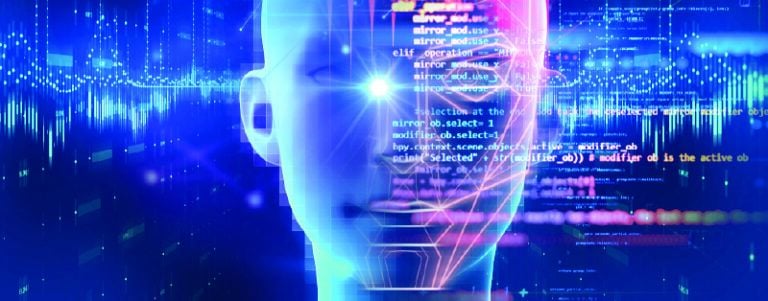Unsupervised Machine Learning for Tech Experts

- Unsupervised Learning 101
- Why Consider Using Unsupervised Learning?
- Working Of The Unsupervised Learning Algorithm
- Types of Unsupervised Learning Algorithms
- Unsupervised Machine Learning Algorithms
- Unsupervised Learning: Advantages
- Unsupervised Learning: Disadvantages
- Unsupervised Learning vs. Supervised Learning
- The Bottom Line
The forecasted worldwide revenues for the artificial intelligence market are $432.8 billion. The growth of AI and Machine Learning is endless. Sources suggest that nearly 42% of companies globally are exploring the use of AI in their businesses.
So, the use of machine learning algorithms is also endless. Even though supervised learning algorithms are extremely common, what if you have unlabelled data sets, and you need to look for hidden patterns in them? In such a case, you need the techniques that come under unsupervised machine learning algorithms.
Unsupervised Learning 101
As is apparent from the name, in unsupervised learning, the model is not trained or supervised with a training data set. Instead, in this, the model itself looks for insights and the hidden pattern in the given data set.
This learning method can be compared to the learning method that takes place in our brains when we are learning new things. Unsupervised learning algorithms are defined as a type of machine learning where the models are trained using a dataset that is not labelled. The models have permission to act on this dataset without any training or supervision.
Unsupervised learning algorithms cannot directly be applied to a classification or regression problem because, in this model, we have the input data but no output corresponding data. The goal of this learning is to discover the underlying structure of this dataset, group it according to its similarities, and then represent the dataset in a compressed method.
Why Consider Using Unsupervised Learning?
Here are some reasons to emphasize the importance of unsupervised machine learning for customer market segmentation:
- Unsupervised learning is useful when you’re looking to find useful insights from your data set.
- Unsupervised learning is very much similar to a human brain as it learns to think with the help of experiences, therefore, making unsupervised machine learning for customer market segmentation closer to real Artificial Intelligence.
- Unsupervised working allows you to work on uncategorized and unlabelled data.
- In real-world scenarios, the input data doesn’t always have corresponding output data. So, in such cases, we need unsupervised learning.
Working Of The Unsupervised Learning Algorithm
In an unsupervised learning algorithm, unlabelled input data is taken. This means that the data is not categorized, and no corresponding outputs are given. After that, the input data is fed into the unsupervised machine learning models to train it.
First, the model will interpret the raw input data to look for hidden patterns. After that, it will apply suitable algorithms such as decision trees, k-means clustering, etc. After applying the algorithm, it will divide the raw input data objects into different groups based on the differences and similarities in the objects.
Types of Unsupervised Learning Algorithms
The unsupervised machine learning models can be classified into two types of problems. These two types are Clustering and Association.
1. Clustering
In clustering, the objects are grouped into clusters such that the ones with the most similarities are in the same group, whereas they have no or fewer similarities with the other group objects. Analysis of the clusters helps in finding similarities between the raw input data and then categorizing them on the basis of the presence and absence of those similarities.
2. Association
In Association, a relationship is found between the variables in the large dataset. It helps in determining the set of objects that occur together in the database. Marketing strategy is made much more effective by the association rule.
Unsupervised Machine Learning Algorithms
There are several unsupervised learning algorithms used, but here are some of the most popular ones:
- K-means Clustering
- KNN (k-nearest neighbours)
- Anomaly Detection
- Hierarchical Clustering
- Principal Component Analysis
- Neural Networks
- Apriori Algorithm
- Independent Component Analysis
- Singular Value Decomposition
Unsupervised Learning: Advantages
There are several benefits to using unsupervised machine learning examples for your models, and here are a few of them:
- When compared to supervised learning algorithms, unsupervised algorithms are used for much more complex tasks. This is because you do not have to label the raw input data in this learning model.
- Another way in which using unsupervised learning algorithms is better than using supervised algorithms is because it is much easier to find unlabelled raw input data than it is to find labelled data.
- The need for the data to be labelled is one of the greatest disadvantages of supervised learning algorithms, and unsupervised learning algorithms cut that out from the process.
Unsupervised Learning: Disadvantages
Along with the several advantages of the unsupervised machine learning example, there are a few disadvantages you should be aware of before considering it for your model.
- Unsupervised learning is much more difficult intrinsically than supervised learning. This is because it does not have any corresponding output data for the raw input data.
- One of the biggest disadvantages of unsupervised learning algorithms is that the output obtained from the input data might be much more inaccurate than the putouts in supervised learning methods. This is because the raw input data is unlabelled. So, the algorithm has no idea about the exact output, giving it a much higher probability of mistakes and inaccuracy.
Unsupervised Learning vs. Supervised Learning
The main differences between supervised and unsupervised Learning Algorithms are as follows:
1. Input Data
The input data used by supervised learning algorithms are labelled so that the algorithm can be trained. Unsupervised learning, on the other hand, is trained using unlabelled data.
2. Accuracy
The supervised learning algorithm makes use of direct feedback to confirm if it is predicting the right output or not. The unsupervised learning model, on the other hand, does not take any feedback.
3. Primary Aim
The supervised learning model’s primary aim is to predict the output, whereas the unsupervised model’s primary aim is to find hidden patterns in the input dataset.
4. Artificial Intelligence
The supervised learning algorithm is not close to AI as this model needs to be trained first, and then only can the correct output be predicted. At the same time, unsupervised learning is much closer to AI, as it is trained just like a little kid learning routine things from their experiences.
The Bottom Line
Unsupervised machine learning algorithms are best used when you want to draw inferences from an unlabelled dataset. It can be used in situations when you don’t know what exactly it is that you’re looking for, but you want to find patterns in the raw input data set.
This learning method is the closest to Artificial Intelligence because of these qualities. So, use this learning algorithm when you have an unlabelled set of data, and you’re looking to detect patterns in it.Emeritus India offers data science programmes from leading global schools and universities to help you upskill.














